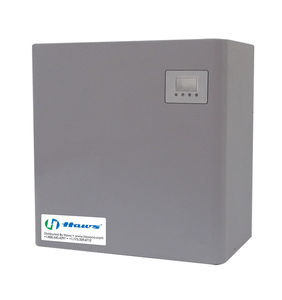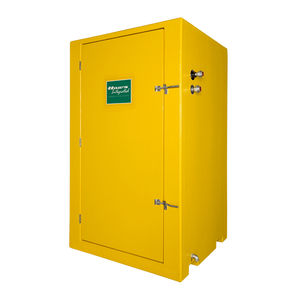
- Hydraulics - Pneumatics
- Valve
- Temperature control thermostatic valve
- Haws AG - Headquarters for Europe, Middle East and
- Company
- Products
- Catalogs
- News & Trends
- Exhibitions
Temperature control thermostatic valve 9201EW AXION®brassfor water3-way



Add to favorites
Compare this product
Characteristics
- Technology
- temperature control
- Materials
- brass
- Applications
- for water
- Other characteristics
- 3-way
Description
Model 9201EW Emergency Valve thermostatically mixes hot and cold water to provide a safe fluid supply for a single emergency eye/face wash. Additionally, to ensure a fail-safe water supply for emergency eyewash stations, a cold water by-pass valves open in the event of hot water pressure loss. (No gauges supplied - ASSE 1071 standard recommends gauges be placed 5 to 8 feet (1.52 to 2.44 m) downstream for the most accurate temperature measurement.)
• A flow rate of 1 to 10 gpm (3.8 to 37.8 L) for better temperature control across the operating range
• AXION's superior design and technology provide a complete safety solution for increased victim comfort.
• Wax based thermostat technology for fast response time with proven highly reliable temperature control
• Cold Water Bypass flow rate of 3.8 gpm (14.4 L) (When tested under conditions specified in ASSE 1071)
• Modular brass design with supplied check valves
• Over-sized valve seats resist failures caused by foreign matter
• Efficient funnel design improves temperature control at low flow rates
• Outlet temperature is factory set to 85® F (29® C).
• Tempered water: High temperature limit is factory set to 90® F (32® C).
Exhibitions
Meet this supplier at the following exhibition(s):

Other Haws AG - Headquarters for Europe, Middle East and products
TEMPERED WATER SYSTEMS
Related Searches
- Valve
- Hand valve
- Control valve
- Ball valve
- Stainless steel valve
- Water valve
- Threaded valve
- Regulating valve
- Lever control valve
- Valve for industrial applications
- Nickel-plated brass valve
- Hydraulic valve
- Radial diaphragm valve
- 2-way valve
- Flow control valve
- Relief valve
- Water valve
- Flow regulator valve
- Automatic valve
- Actuator valve
*Prices are pre-tax. They exclude delivery charges and customs duties and do not include additional charges for installation or activation options. Prices are indicative only and may vary by country, with changes to the cost of raw materials and exchange rates.















